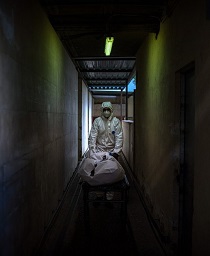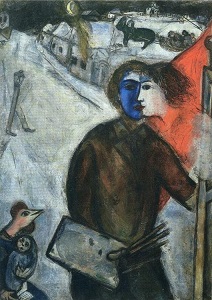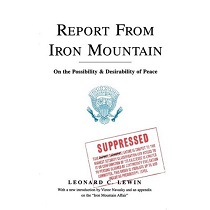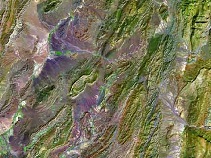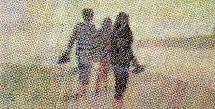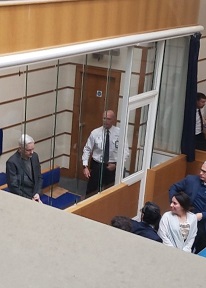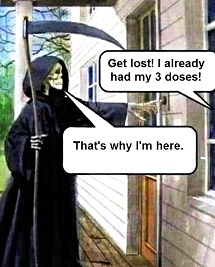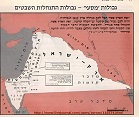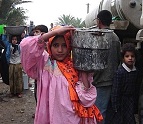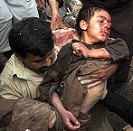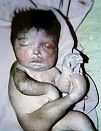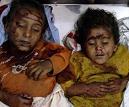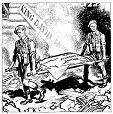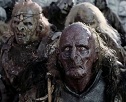Factbox: 300 days of Israeli genocidal war on Gaza and 3,457 massacres
The genocidal war on Gaza launched by the Israeli regime on October 7 last year completed 300 days on Thursday, leaving behind a trail of death and destruction with nearly 40,000 Palestinians killed. Human rights watchdogs, however, believe the death toll is much higher as thousands remain missing, trapped under the rubble and ruins.
In the past ten months, the Israeli military has dropped 82,000 tonnes of explosives on Gaza, carried out 3,457 massacres in the territory, and displaced almost the entire 2.3 million population, according to Gaza’s Government Media Office.
Among those killed by the apartheid regime in these 300 days of the genocidal war were nearly 16,314 children and 10,980 women.
Here are some of the gory massacres that Israel carried out in the coastal strip in the past 300 days with complete impunity provided by the US and other Western allies.
Al Ahli Baptist Hospital massacre — Last year on October 17, nearly 500 Palestinians were killed after Israeli warplanes dropped heavy bombs on the al-Ahli Baptist Hospital in Gaza City.
The medical complex had become a place of refuge for women and children whose houses were bombarded by the regime forces in the initial days.
The devastating blast also massacred dozens of doctors, nurses, and paramedic staff there.
“We were performing surgery at the hospital when a strong explosion occurred and the ceiling fell on the operating room… This is a massacre,” Dr. Ghassan Abu Sitta, a British Palestinian surgeon, recounted.
Eyewitnesses revealed horrifying details of collecting scattered body parts after the hospital was struck by an Israeli rocket.
Greek Church massacre — The Greek Orthodox Church of St. Porphyrius in the besieged Gaza Strip was hit by an Israeli airstrike on October 20, leading to another tragic massacre.
The 12th-century church, which happened to be the oldest in Gaza, was sheltering at least 500 displaced Palestinians who were forced to leave their homes following Israeli bombardment when it was targeted.
Among the dead were 17 Christians - a community that has been facing a “threat of extinction” since Israel launched the horrific assault on the coastal territory.
Jabalia refugee camp massacre — In November, the regime dropped at least two 2,000-pound bombs, the second largest type in its arsenal, on the site of the Jabalia refugee camp north of the Gaza Strip, killing scores of vulnerable Palestinians.
The densely populated camp was attacked at the beginning of the war, including on October 9, 12, 19, and 22, killing and wounding hundreds of people.
On December 2, more than 100 Palestinians were killed and many injured when Israel again fired a barrage of missiles at the Jabalia refugee camp.
“A missile strike targeted a residential building belonging to the Obaid family in Jabalia camp,” the local Palestinian media reported at the time.
Just two weeks after this massacre, nearly 90 more Palestinians were killed and more than 100 others injured on December 17, as the Israeli regime again bombarded the refugee camp.
Gaza Health Ministry at the time said the strikes hit a residential block belonging to the al-Barsh and Alwan families in the town of Jabalia.
Shadia Abu Ghazala School massacre — On December 13, displaced families were sheltering in the United Nations-run Shadia Abu Ghazala School west of the Jabalia refugee camp in northern Gaza when Israeli soldiers entered the building and started firing indiscriminately on the displaced Palestinians.
More than 15 bullet-ridden decomposed bodies were found piled up in the classrooms hours later.
A team from the Geneva-based human rights group Euro-Med Human Rights Monitor said the attacks were unjustified and targeted innocent civilians who had sought refuge in shelter centers after receiving Israeli orders to evacuate their homes and residential areas.
Flour massacre — On February 29, at least 120 people were killed and more than 760 others wounded when the Israeli army opened indiscriminate fire at hundreds of starving Palestinians waiting for food aid.
People had gathered at Harun al-Rashid Street in Gaza waiting for the aid trucks believed to be carrying flour for the residents of southwest Gaza who had been fighting food scarcity for months.
As the convoy of aid trucks passed through the checkpoint, heading north, the Israeli military started shooting at people who had gathered in large numbers.
After the first round of shooting stopped, people desperate for aid returned to the trucks, only for the regime army to open fire again.
Recounting the details, eyewitnesses said the firing was followed by Israeli tanks running over the injured and dead bodies that lay scattered on the road.
Following the flour massacre in late February, the regime has reportedly killed more than 400 starving Palestinians waiting in lines for life-saving aid.
Al-Shifa Hospital massacre — Euro-Med Human Rights Monitor in its scathing report stated that the Israeli massacre at al-Shifa Hospital was one of the largest in Palestinian history.
The human rights group said that at least 1,500 people had been killed, injured, or reported missing, “with women and children making up half of the casualties,” during the months-long siege of the hospital between November 2023 and April 2024.
Revealing bone-chilling details, the Euro-Med report confirmed that at least 22 patients were shot dead while in their hospital beds. The regime killed hundreds of civil government employees as well as doctors who refused to abandon their sick patients.
Israeli troops also destroyed and set ablaze nearly 1200 houses in the vicinity of the hospital.
Following two Israeli raids on the medical complex in November and March, three mass graves were discovered inside the Al-Shifa Medical Compound.
Euro-Med reported that “the presence of urinary catheters or splints, which were found to be still attached to some of the dead patients’ bodies during the exhumation process, as well as medical files that were buried with them in Al-Shifa Medical Complex, confirm the execution of ill and injured people.”
Al Nasser Hospital massacre — In February, Israeli forces raided one of the biggest functioning medical facilities in the southern Gaza Strip, Nasser Hospital, following days of bombardment.
After the regime forces withdrew from Khan Younis city in April, locals uncovered a mass grave inside the Nasser Medical Complex, containing some 400 bodies.
The deceased included “older people, women and wounded, while others were found with their hands tied and stripped of their clothes,” said the spokesperson for the UN High Commissioner for Human Rights, Ravina Shamdasani.
World Central Kitchen massacre — On April 1, Israeli regime forces struck a World Central Kitchen (WCK) convoy and killed seven aid workers, drawing a massive global outcry.
WCK in its statement after the massacre said they had been traveling in two armored cars emblazoned with the charity’s logo and another vehicle.
Despite coordinating movements with the Israeli military, the convoy was hit as it was leaving its Deir al-Balah warehouse, it said at the time.
In a report, the Israeli newspaper Haaretz, citing military sources familiar, said an Israeli drone fired three missiles “one after the other” at the aid convoy.
Rafah tent massacre — On May 27, the Israeli military carried out a heinous attack that caused a huge blaze at a tented area for displaced people in Rafah, southern Gaza Strip, killing nearly 50 people and injuring 200 others.
Images of charred and dismembered bodies of children sent ripples of shock and anger throughout the world and triggered a global outcry with a viral social media hashtag #AllEyesOnRafah.
The hashtag was shared more than 46 million times as Israel continued its attacks on the southernmost part of the Palestinian territory with sheer impunity.
Later, details revealed that a US-made GBU-39 was used by the regime in its attack on a tent camp in a designated “safe zone” in Rafah.
The UN Palestinian Refugee Agency (UNRWA) said in a statement that the images from Rafah were yet another testament that Gaza is a “hell on earth.”
Following the attack, the health ministry of Gaza said about half of the dead were women, children, and elderly. In various videos that went viral on social media, barefooted children could be seen wandering around the ruins searching for their family members.
Two days after the massacre, Israel bombed a camp for displaced people in Al-Mawasi, west of Rafah, killing at least 21 Palestinians and leaving 64 wounded.
Nuseirat refugee camp massacre — In June, Israeli forces killed nearly 300 Palestinians, including 64 children and 57 women in the Nuseirat refugee camp, to free four Israeli captives.
More than 700 Palestinians were injured in the attack.
Israeli soldiers disguised themselves as displaced people in several civilian trucks that entered the Nuseirat camp market.
One truck was loaded with furniture to appear it was moving displaced people, while another had commercial brand markings.
More Israeli soldiers landed in a helicopter on Gaza’s shore, near the US-built pier (America has since dismantled the pier that aided Israeli genocide).
To spread panic and provide air cover to its soldiers, Israeli forces started bombarding the camp, hitting the busy market and killing hundreds of Palestinians.
Al Mawasi massacre — At least 90 Palestinians were killed and more than 300 wounded on July 13 after Israel carried out a series of airstrikes on the Al-Mawasi refugee camp near the southern Gaza city of Khan Younis.
The attack by Israeli warplanes targeted tents housing displaced Palestinians and a water distillation unit in an area that was designated as a “safe zone” by the Israeli military.
Eyewitnesses were quoted as saying that the missile attack was followed by quadcopter drones of the regime that opened fire on ambulances and civil defense teams as they arrived to rescue the injured.
Deir al-Balah massacre — Nearly 31 people were killed last week in an Israeli strike at Khadija School sheltering Palestinians in the city of Deir al-Balah in the central part of the Gaza Strip.
The victims included at least 15 children and 8 women. The attack on Khadija School also wounded more than 100 people.
With almost all the infrastructure destroyed by Israeli airstrikes, the injured were seen arriving on foot at the hospital, with their clothes stained with blood.
____________________________________________________________________________________________
Image: © PressTV. AWIP: http://www.a-w-i-p.com/index.php/2024/08/02/factbox-300-days-of-israeli

